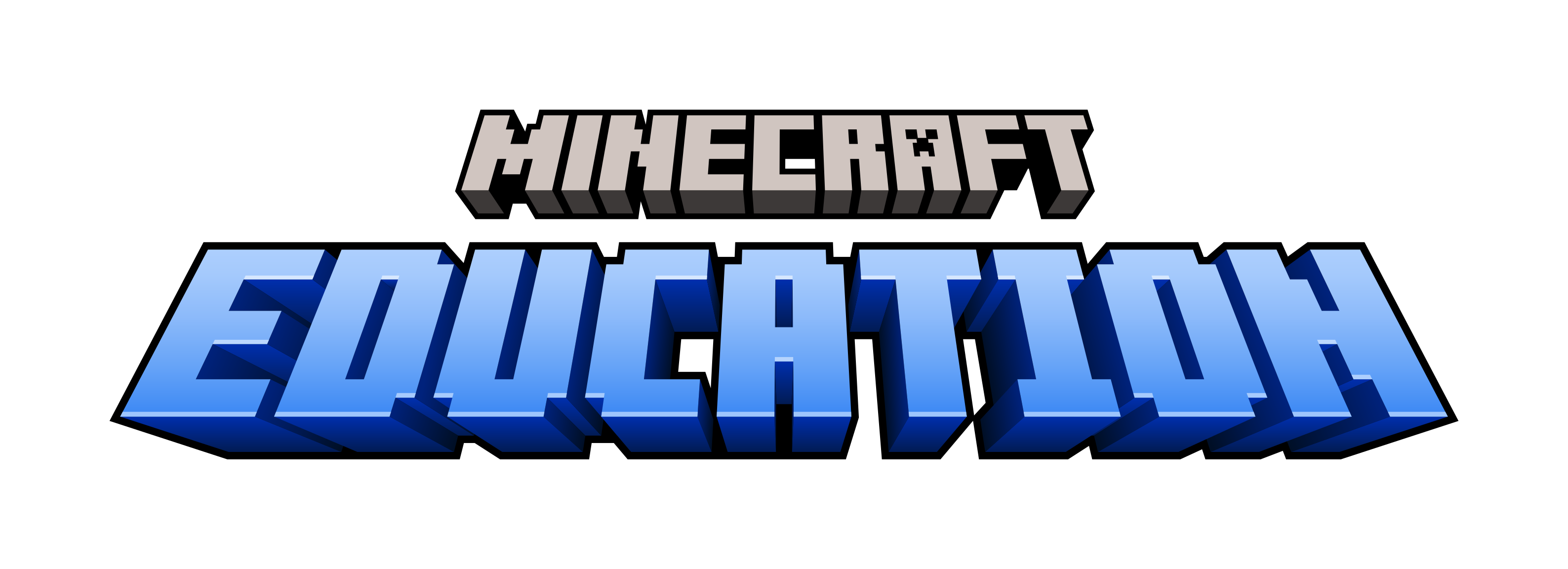New Study: Understanding the Impact of Minecraft in the Math Classroom
Minecraft: Education Edition’s 3D sandbox environment and block-based mechanics make it an ideal workspace for students to learn mathematical principles and test their ideas. Concepts like area and perimeter, patterns, ratios, and coordinates all come alive when they’re laid out spatially and can be manipulated with the click of the mouse. Learning with a game that students know and love also helps keep them engaged and energized.
We wanted to know more about the benefits of using Minecraft to teach math. In 2019, we partnered with the Queensland University of Technology’s Digital Media Research Centre in Australia to try and understand the impact that Minecraft: Education Edition can have for younger students as they learn mathematics. We were eager to examine the ways that the Minecraft environment builds engagement, especially in classrooms where the teachers are new to the game. After a three-month study, students showed remarkable progress in both their understanding of math and their confidence around the subject. We’d like to share the results and provide some inspiration for using Minecraft: Education Edition in your own math classroom!
How did the study work?
The researchers at Queensland University wanted to make sure that the study was representative of a broad cross-section of Australian schools, not just technologically advanced institutions in major urban centers. The schools were drawn from across the state of Queensland—urban and rural, central and remote, and from a wide geographical area. They gathered data from 307 students and 14 teachers from 6 schools across Queensland:
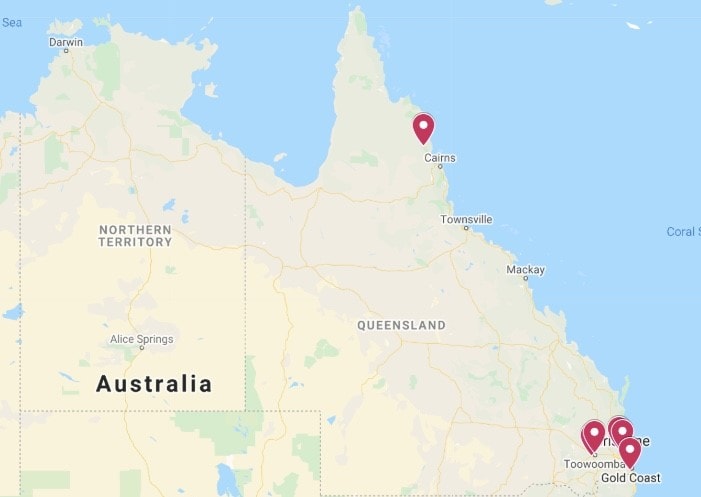
- Two schools in Brisbane, the state’s capital
- One school in Gold Coast City in the southeast
- Two schools in the inland region of Toowoomba
- A school in the rural Cairns region in the Far North
The researchers chose these schools to ensure a range of socio-economic statuses, along with wide cultural and geographical diversity. They were eager to involve teachers who had not previously used Minecraft either at home or in school. Although the focus was on teachers who were new to the game, a small number of the educators had extensive experience, including one Minecraft Global Mentor. In contrast, almost all the students had previously played Minecraft in some form.
Since this project’s focus was on novice Minecraft educators, the study aimed to try out suitably straightforward resources with the teachers in the six schools. It was essential to make the implementation of the learning activities as trouble-free as possible in order to focus on the mathematics learning experience, rather than technological issues or the complexities associated with more advanced Minecraft: Education Edition lessons. To make sure the activities were aligned to the Australian curriculum and accompanied by accessible support materials, the team chose the Algebra Architecture and Area and Volume lessons.
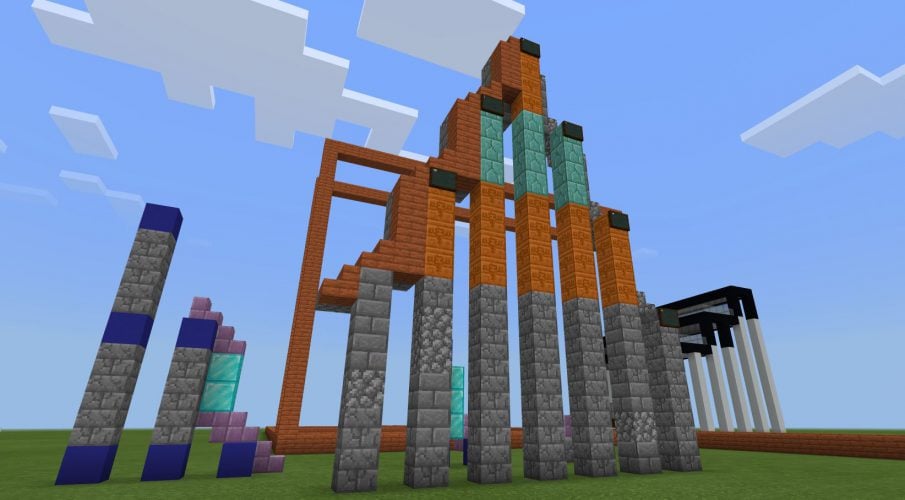
The Algebra Architecture lesson explores math models to learn about arithmetic patterns, and students use this knowledge to build architectural designs. Area and Volume encourages learners to create and solve problems involving spatial mathematics, a perfect challenge for Minecraft’s cubic environment and uniformly sized blocks!
Results from students and teachers
Across all the participating schools, the results were overwhelmingly positive, with plenty of thoughtful responses from both students and teachers. One school, located on the north side of Brisbane, serves students from preschool to the sixth grade. Two fourth grade classes took part in the study by accomplishing the Area and Volume lesson, with 50 students between them. Although one of the teachers had extensive experience with Minecraft: Education Edition, the other had only used the game three times so far.
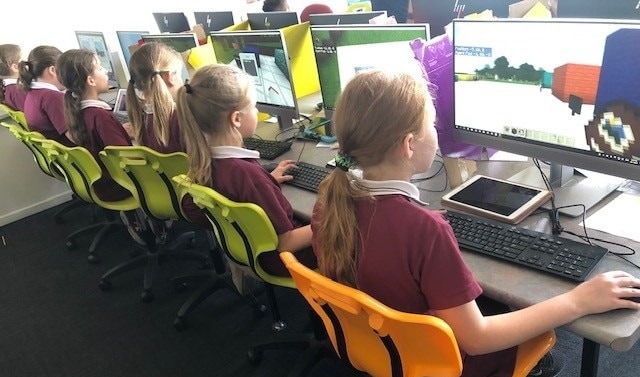
The more experienced teacher shared that he’d mostly used Minecraft to illustrate concepts like scale, addition, multiplication, area, volume, and perimeter. The game’s greatest strength? In the educator’s own words, “Minecraft provides another kind of motivation and creative way to demonstrate knowledge.” He added, “Minecraft: Education Edition is best used to create, and I think that external activities play a large role. Minecraft: Education Edition should be used as a creative way to collaborate and communicate knowledge and understanding of ideas.”
The teacher who was new Minecraft immediately perceived the benefits since she saw how enthusiastic her students were to use this tool in class. When comparing the students’ attitudes toward general mathematics in class compared with learning in Minecraft, she observed a jump in enthusiasm. In her view, “Minecraft is a great way to synthesize understanding of maths concepts, engage all learners, and to provide open-ended activities to cater to all learning levels.” Perhaps most importantly, she expressed the belief that Minecraft caters to different types of learners, making it possible to scaffold for students who need more support.
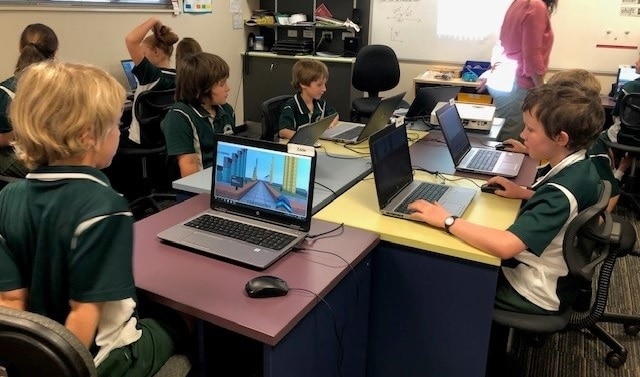
And what about the students? Learners at the Brisbane school unanimously shared that they’d like to use Minecraft again for math learning. When asked whether they felt their understanding had grown after using the game, the team heard responses like “It just feels a bit easier on the computer,” and “It made maths really fun, and I’m really good at playing Minecraft on the computer.” Between the digital environment where the current generation of students is most comfortable and the visual nature of learning math in Minecraft, students’ experience was overwhelmingly positive.
We were especially interested to hear results from the school in Far North Queensland, over 1,000 miles north of the state’s capital. Rural schools often struggle with access to resources and technology, and students can experience significant disadvantages as a result. One grade 3/4 composite class took part in the study, and the teacher was a complete novice—she’d never played Minecraft before or used it for teaching at all! In spite of her inexperience, she saw the benefits right away and shared this insightful reflection.
Given my teaching experience, I’m very confident in the use of my usual maths resources, which are generally a combination of paper, digital, and hands-on. Minecraft is much more interactive and contains many more elements than any digital resources I’ve so far used, thus adding a higher level of difficulty and complexity. It also provides an avenue for greater inquiry and open-ended learning for students, which presents greater challenges in monitoring and management of lessons. The use of the slate, camera, and portfolio helps with this aspect considerably.
I was overwhelmed by the ease with which the students engaged with the activities. Given their general high level of skill with the game prior to the learning activity, they completed tasks and moved through the activity much more quickly than I expected, and with a much higher level of success. In the future, with greater time, I would like to see students develop more complex patterns and structures than those completed in this activity. One of the strengths of using this game is the opportunity it provides students to view maths in ‘real-world’ contexts and extend their learning.
While the open-ended environment might present challenges for classroom management for a novice educator, the in-game features aimed at teacher facilitation and student documentation, along with the sandbox environment’s support for spatial understanding, make Minecraft a powerful learning tool.
These are just a sample of the responses from the educators and students across the six schools. We encourage you to read the study in its entirety and dig more deeply into what learners and teachers had to say. You can access the research here.
What were the overall findings?
While the individual educator and student responses are valuable, it’s especially revealing to look at how the data all come together to tell a larger story. One of the most important measures of success was engagement with Minecraft as a teaching tool compared with other methods of delivering lessons. In this case, the vast majority of teachers agreed that when measured on a scale of 1 to 5, Minecraft: Education Edition provided greater engagement than other methods of teaching, with the bulk of the sample group rating this metric at 4 or 5.
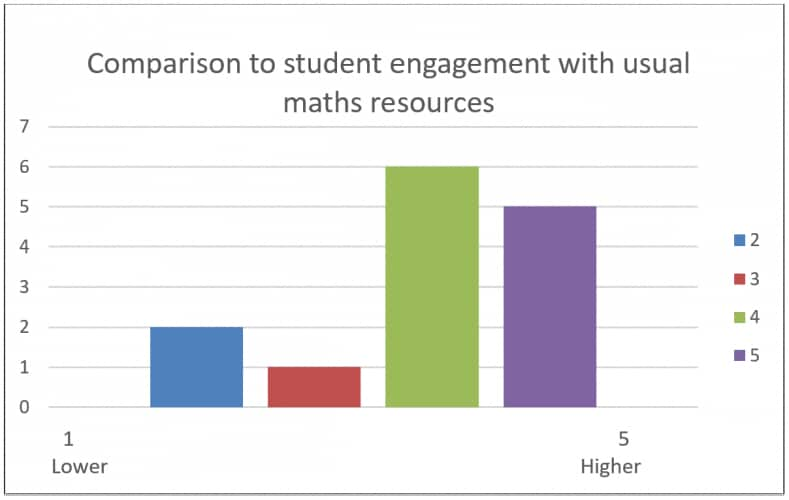
It might seem obvious that students would prefer to house their math lessons in a game-based learning environment, especially in a platform as popular as Minecraft. But what about the value the game adds to learning? When asked about the overall value that Minecraft contributed on a scale of 1 to 5, teachers shared that all except a few students landed at 3 or above, with not a single rating of 1. That means every teacher found at least some added value for their math students, and a significant number of educators thought the benefits were substantial.
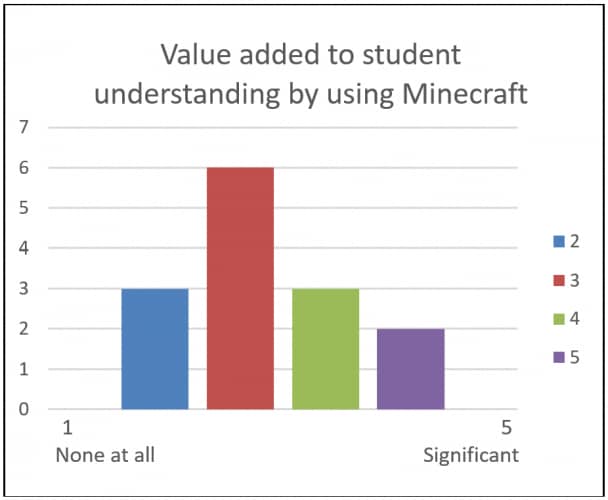
The learners themselves provided some key insights. There was an almost universal agreement that students enjoyed the experience of learning math with Minecraft: Education Edition and would love to use it again. A game-based learning environment has a way of sparking students’ interest!
Beyond enjoying the experience, students also displayed compelling evidence to demonstrate that the game enhanced their learning. When learners were initially asked about their math abilities on a scale of 1 to 5, a relatively even number of students split their answers between 3 and 5, with 4 as the most popular response.
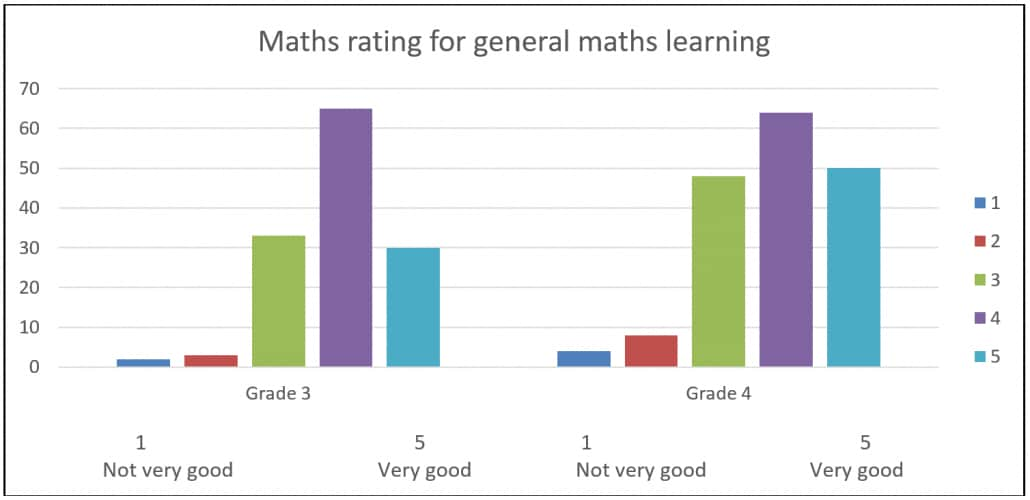
They were then asked about their math abilities while using Minecraft, and the number of learners who considered themselves outstanding math students surged.
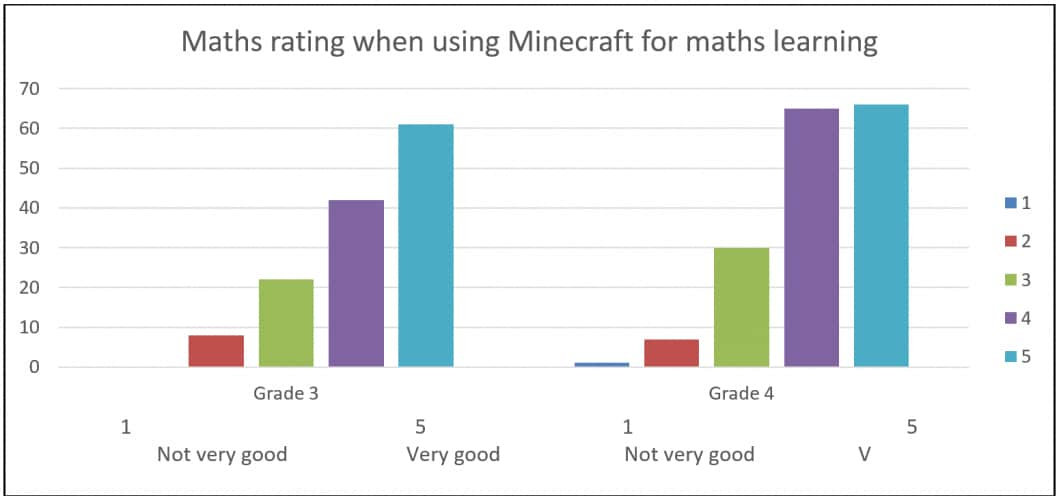
What does this result mean? There could be several interpretations. The data might demonstrate a stronger sense of confidence and ease with mathematics when it’s housed in a digital, game-based environment. Or it’s possible that mathematical information presented visually and spatially, manipulated through building, helps students feel more in control of the subject matter. Whatever the underlying meaning of these results, the outcome is the same: students feel more confident with math when they’re learning in Minecraft: Education Edition.
***
This post contains only a small selection of the research’s extensive results. We’d recommend taking a look at the whole study to hear more student and teacher testimonials, see more comprehensive data, and learn more about the experiment. Read and download the complete research here.
If you teach math and want to bring your subject alive in Minecraft’s game-based learning environment, we encourage you to check out our Math Subject Kit. It’s brimming with lessons, curriculum guides, and resources to support your teaching. If you’re new to Minecraft: Education Edition, take your first steps toward using this game-based learning tool for students—whether they’re learning at home or at school—at education.minecraft.net.
